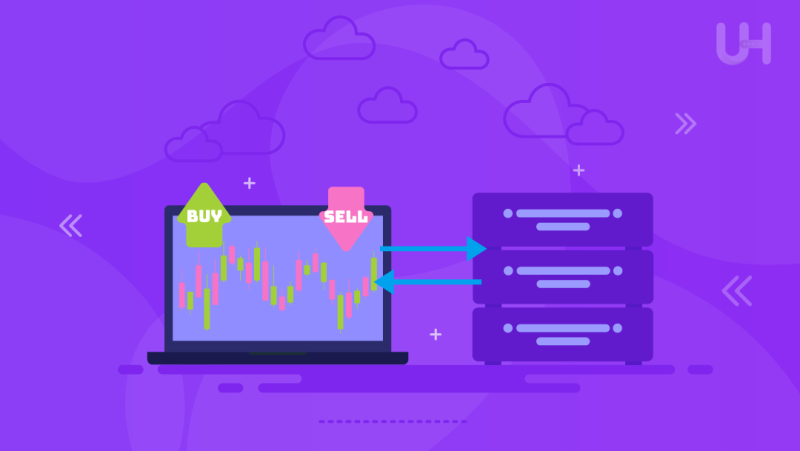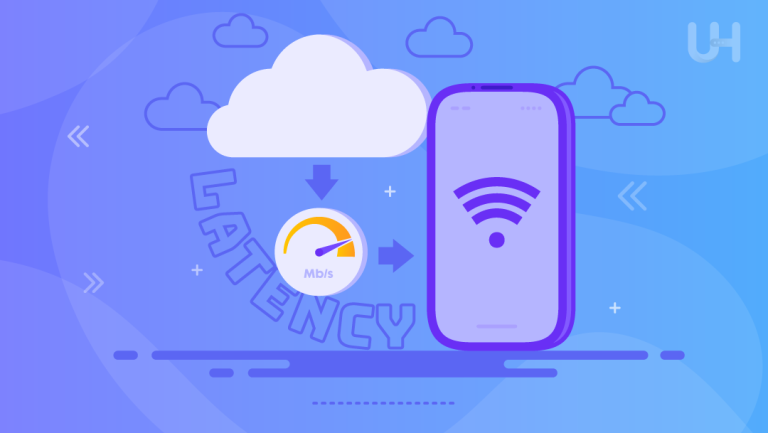Automated trading has revolutionized the way investors participate in the dynamic Forex and Crypto markets. Gone are the days when traders had to make split-second decisions manually. Now, algorithms and software execute trades on behalf of investors and capitalize on market opportunities with remarkable efficiency. Therefore, in trading every tiny moment counts. That’s where server latency comes in.
Latency in automated trading basically means the delay in sending messages between your computer and the place where trades happen. Even a tiny delay can make a big difference because prices in the market change really fast. To put it simply, keeping server latency low is super important for traders because it helps them trade faster and make more money.
Understanding Server Latency
Server Latency in forex trading is essentially the time it takes for information to travel back and forth between your computer or trading platform and the server where all the action happens. It’s like the lag you might experience when streaming a video – there’s a delay between when you click play and when the video actually starts playing. Similarly, in trading, there’s a delay between when you place an order and when it gets executed, all because of server latency.
Types of latency
Now, let’s break down the different types of latency that can affect your trades. First up, we have network latency. This is the delay caused by the physical distance and the quality of your internet connection between your device and the dedicated server. If your internet is slow or there’s a lot of traffic, it can take longer for your data to reach its destination.
Next, we have processing latency. This is the delay that occurs when your trading software or the server itself takes time to process your commands. It’s like when you’re using a computer with too many programs open – things start to slow down because the processor is overloaded. Similarly, if the trading server is dealing with too many orders at once, it can slow down the execution process.
Additionally, disk latency, related to the time it takes for data to be read from or written to storage disks, can impact the retrieval and storage of historical market data, crucial for analysis and backtesting.
Finally, hardware latency, stemming from delays in physical components like processors, memory, and I/O devices, can affect the overall performance of the trading system.
By understanding and minimizing these various types of latency, traders can improve the speed, accuracy, and efficiency of their trading operations, ultimately enhancing their trading performance and profitability.
Factors contributing to server latency
Now, let’s talk about why server latency happens in the first place. There are a few key factors at play here:
- Hardware limitations: The server hardware, like the processor and memory, can only handle so much data at once. If there’s too much going on, it can slow down the processing speed and increase latency.
- Network congestion: Just like a busy highway during rush hour, the internet can get clogged with traffic, especially during peak trading hours. If there’s too much data trying to squeeze through the same network pipes, it can cause delays in transmission.
- Distance from servers: Ever notice how websites load faster when the server is closer to you? The same principle applies to trading servers. The farther away you are from the server, the longer it takes for your data to travel back and forth, increasing latency.
How Does Server Latency Affect Trading?
Server latency plays a crucial role in determining the performance of trading operations, influencing outcomes in several key areas.
Slippage and its relation to server latency
Slippage occurs when the price at which an order is executed differs from the expected price at the time the order was placed. Server latency directly contributes to slippage by introducing delays in the transmission of trading commands to the market. In fast-moving markets, even a slight delay in order execution due to server latency can result in significant slippage. Ultimately, causing traders to buy at higher prices or sell at lower prices than intended. This can erode profits and adversely affect trading strategies, particularly in high-frequency trading where small price discrepancies can have a substantial impact on profitability.
Effect on order execution speed and accuracy
Server latency also affects the speed and accuracy of order execution, which are critical factors in trading performance. A delay in order execution due to server latency can result in missed trading opportunities or execution at less favorable prices. In markets where prices change rapidly, such as during news events or periods of high volatility, the impact of server latency on order execution speed becomes even more pronounced. Additionally, latency-related delays can lead to order inaccuracies, such as partial fills or failed executions, further hindering trading performance and increasing the risk of losses.
Ready to Optimize Your Trading?
Take control of your trading performance now. Explore Ultahost’s Forex VPS hosting for lightning-fast execution and minimal server latency. Start trading with confidence!
Strategies for Reducing Server Latency
Minimizing server latency is pivotal for traders aiming to optimize their trading performance and gain a competitive edge. Here’s an in-depth exploration of effective strategies for reducing server latency:
Choosing the right trading platform and broker
The foundation of latency reduction begins with selecting a trading platform and broker equipped with robust infrastructure and low-latency connections. Traders should meticulously research and compare different platforms and brokers, prioritizing the need for speed, reliable connectivity, and high uptime. Additionally, opting for a broker with proximity to major trading hubs can be advantageous, as it diminishes latency by reducing the physical distance between the trader’s system and the trading servers.
Utilizing low-latency servers and proximity hosting
Deploying low-latency servers and leveraging proximity hosting services can substantially diminish server latency. By colocating trading servers in data centers situated near exchange servers, traders can minimize both the geographical distance and network hops between their systems and the trading infrastructure. This proximity fosters faster order execution and diminishes latency, providing traders with a competitive edge in executing trades promptly and efficiently.
Implementing advanced trading algorithms and order types
Implementing sophisticated trading algorithms and employing order types tailored for low-latency execution is instrumental in optimizing trading performance. High-frequency trading (HFT) algorithms are meticulously crafted to execute trades within microseconds, capitalizing on minor price discrepancies in the market. Additionally, utilizing order types like market orders or limit orders with aggressive price targets can help reduce latency for forex trading.
Optimizing network connectivity

Fine-tuning network connectivity is imperative for minimizing server latency. Traders can adopt various strategies to optimize their network connections:
Fiber-optic connections: Fiber-optic cables boast high-speed, low-latency data transmission compared to traditional copper cables. Traders can harness fiber-optic connections to facilitate faster and more reliable communication between their systems and trading servers.
Direct market access (DMA): Direct market access furnishes traders with direct connectivity to exchange servers, bypassing intermediaries and mitigating latency. DMA empowers faster order execution and more efficient access to market liquidity, particularly in high-volume trading environments.
Utilizing colocation services
Colocation services provide traders with the chance to colocate their trading servers in data centers situated directly adjacent to exchange servers. By positioning trading infrastructure in close proximity to exchange servers, traders can significantly reduce physical distance and network latency. This approach ultimately leads to faster order execution and minimized latency-induced delays.
Conclusion
In the world of automated Forex and crypto trading, server latency – or delays in data transmission – is a big deal. We’ve seen how even tiny delays can lead to problems like slippage, slower trades, and missed chances to make money. But don’t worry! By using the right strategies, traders can reduce these delays and trade more effectively.
By using these strategies, traders can make sure their trades happen quickly and accurately. Also, giving them a better chance to make money in the fast-moving world of Forex and crypto trading.
Stay ahead of the game by minimizing server latency and optimizing your trading performance with Ultahost. Get VPS Hosting with BTC and discover how Ultahost can help you trade with confidence!
FAQ
What is server latency, and why does it matter in trading?
Server latency refers to the delay in data transmission between a trader’s device and the trading server. In trading, even small delays can impact order execution speed, accuracy, and profitability. It matters because faster execution can mean better prices and fewer missed opportunities.
How can I tell if server latency is affecting my trades?
You may notice slippage, where the price you expect to execute a trade at differs from the actual execution price. Additionally, if you experience delays in order execution or find that your trades aren’t being executed as quickly as expected, server latency could be a factor.
What are some common causes of server latency?
Server latency can be caused by factors like network congestion, distance from servers, and processing delays within the trading platform.
How can I reduce server latency in my trading?
There are several strategies you can employ, including selecting a trading platform and broker with low-latency connections. Moreover, implementing advanced trading algorithms, optimizing network connectivity, and using colocation services.








